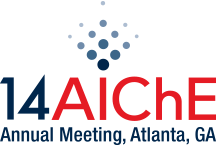

The generation of hydrogen from sunlight is an attractive alternative to directly capture and store solar-energy in the form of a fuel. Solar-fuel generators have the potential to significantly increase the share of renewable energy sources in our current energy portfolio. These devices need to be able to absorb light, generate and transport charge carriers to catalytic centers where water can be dissociated. To date, a significant amount of research has been devoted to the development of photoelectrochemical components (i.e. photovoltaics and electrocatalysts) that can split water in the presence of solar irradiation, but only limited attention has been given to understanding the key aspects that drive economically viable solar-fuel generators. In this study, we introduce a system agnostic approach to elucidate the economic factor behind the design of cost-effective solar-hydrogen generators. The methodology presented here makes use of electrochemical and cost models to compare different material combinations for light absorption and water splitting components on the basis of the hydrogen production cost ($/Kg of H2). Results arising from the analysis demonstrate that properly designed systems can lead to costs as low as $2.90 per kilogram of hydrogen after compression and distribution (versus $2.7-5.7 for hydrogen produced from fossil fuel). Moreover, the analysis demonstrates that the primary cost component in optimized solar-hydrogen generators corresponds to the light-absorbing units (up to 97% of the cost) while the materials selection for the electrolysis components has only small effects in the cost. These results arise from the fact that the photovoltaic components in optimized systems occupy areas that are 2 orders of magnitude larger than those required for electrolysis. Furthermore, physical models were developed to understand the cost effects of the incorporation of solar-concentrators and current invertors, and the optimal scenarios for their implementation will be discussed.
Preview Presentation
Presenter(s)
Once the content has been viewed and you have attested to it, you will be able to download and print a certificate for PDH credits.
If you have already viewed this content,
please click here
to login.
